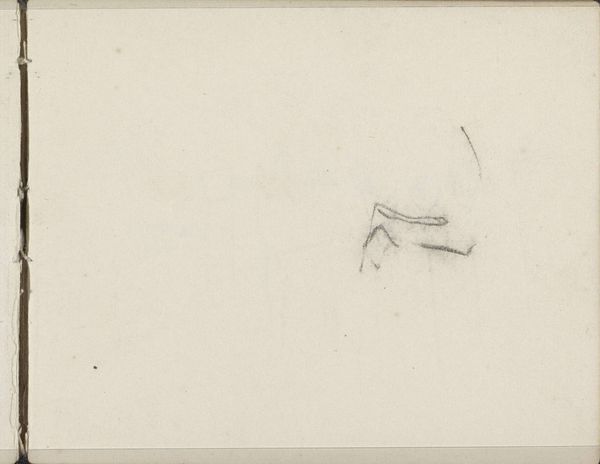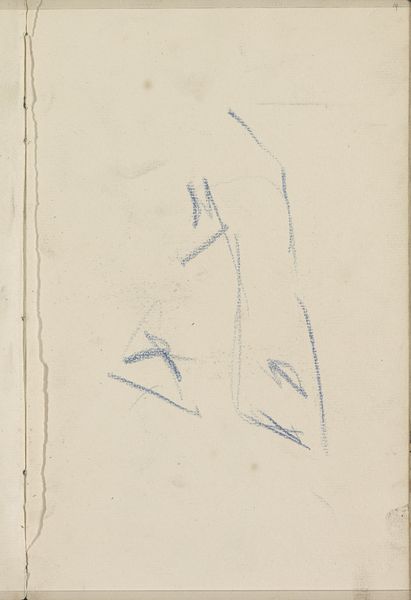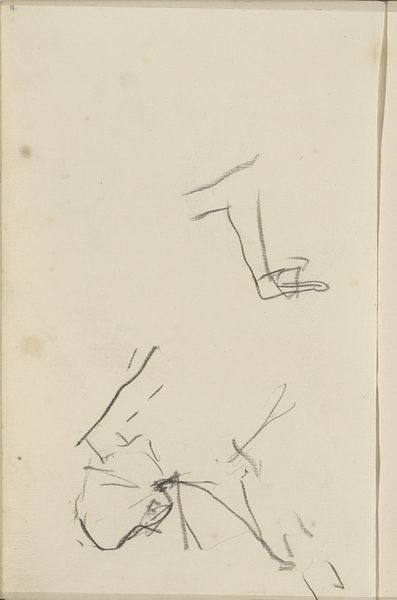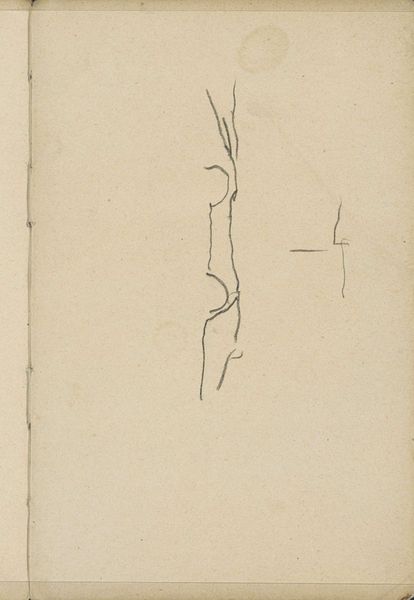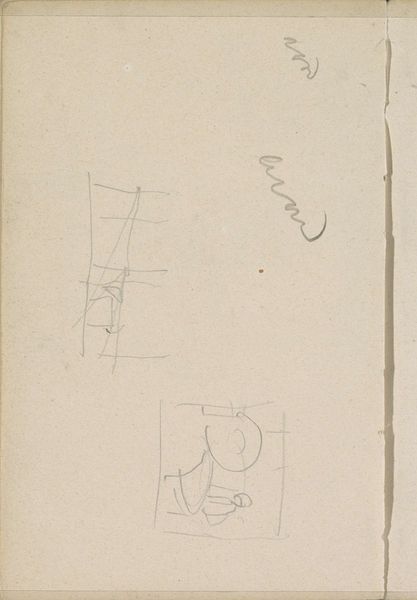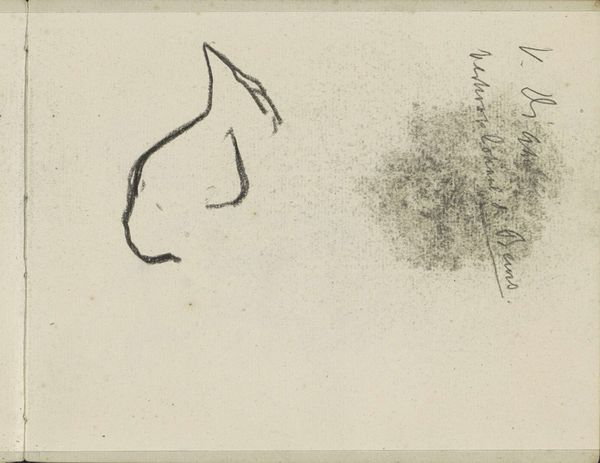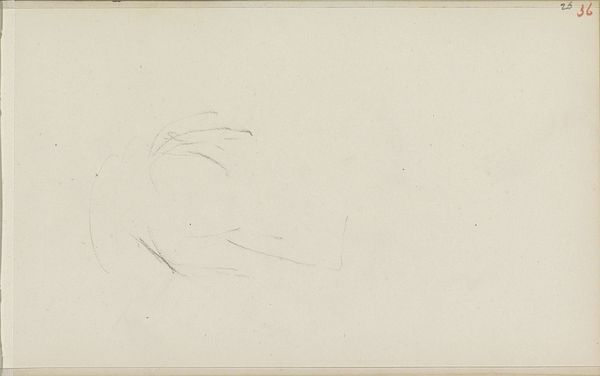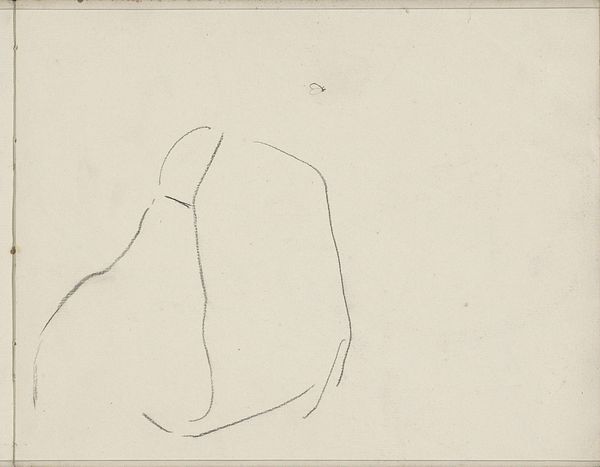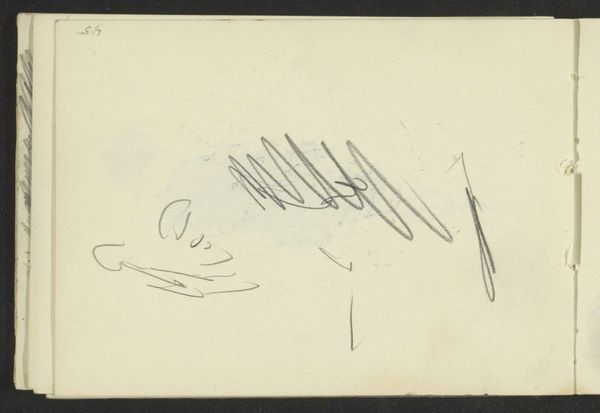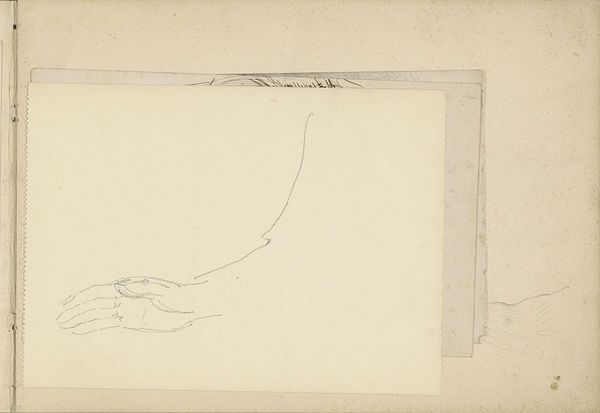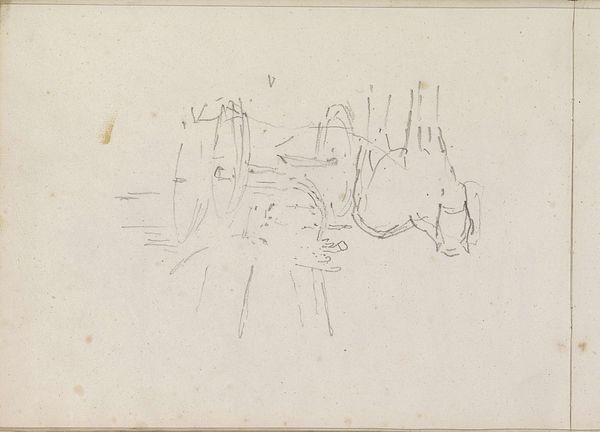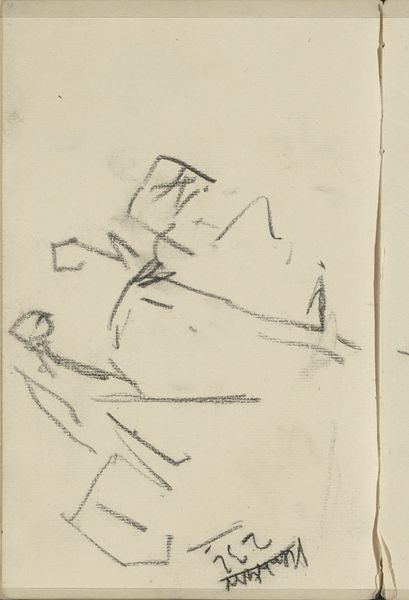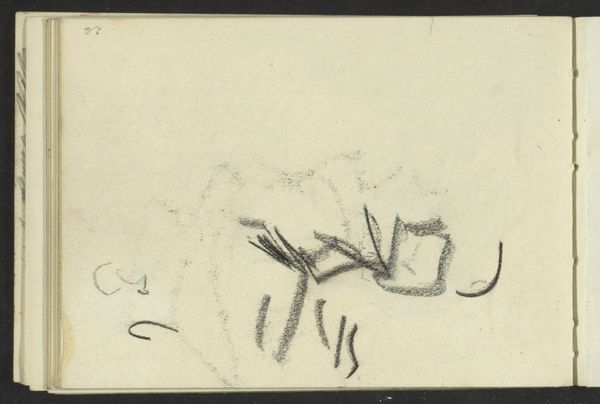
drawing, paper, graphite
#
drawing
#
paper
#
form
#
abstraction
#
graphite
#
watercolor
Copyright: Rijks Museum: Open Domain
This sketch was made by Jozef Israëls sometime in the 19th century, using graphite on paper. Graphite, in its raw form, is nothing more than carbon, the very stuff of life, processed into a dense, layered mineral. It leaves a trace so easily, a direct record of the artist's touch. In this study, Israëls used graphite's inherent qualities to capture a fleeting impression. Look at how the varying pressure of the graphite creates depth and shadow, turning simple lines into a suggestion of form. The marks are tentative, searching, revealing the artist's process of observation and refinement. Drawing, like this, is often seen as a preliminary activity, a step towards a finished painting or sculpture. But it's also a vital form of labor, a way for the artist to work through ideas, to understand the world through the act of making. By focusing on these raw materials and elemental marks, we can begin to appreciate the artist's skill and creative vision. The study reveals Israëls' deep engagement with the world around him.
Comments
No comments
Be the first to comment and join the conversation on the ultimate creative platform.
